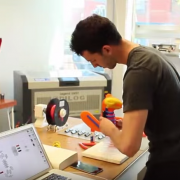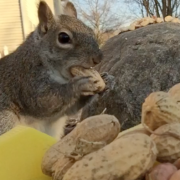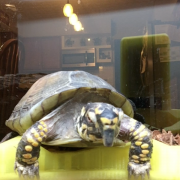Moving image art, taught by Professor Amy Youngs, focuses on the creation of digital images for artistic presentation. Methods include using found footage, animating, and image manipulation. Students integrate other artistic mediums such as drawing, photography, cinematography, and sound.
One of the class projects focuses on the theme of biopresence on campus. This year, the Art and Technology community has been increasing the awareness of the presence of animals on the OSU campus. In this particular class, students were asked to notice animals on campus and use their skills to create a moving image work that would help others notice as well. One student, Maggie Willis, created a video work focusing on the marks animals leave behind that remind people of their presence. By using programs such as After Effects and Premiere Pro, she was able to create this unique interpretation she titled “ShadowStract.”
“Animals remind us of their presence through the marks they leave behind as they pass through, leaving abstract “shadows” in their wakes.”
The next semester, graduate instructor Jessica Ann taught the course. Students were given a similar assignment and an entirely new creative group were able to put their own spin on the topic. Jasmine Rajavadee used hand-drawn and stop-motion animation to bring small creatures to life in Thompson Library. This is one example of bringing multiple mediums together to form one cohesive artwork.
Created by Jasmine Rajavadee, for the Ohio State University’s Moving Image art class (Spring 2015).
“Addressing the theme of “biopresence,” we witness the attempts of small Ohio wildlife-inspired creatures attempt to make their own presence known to the humans in the urban space of the library.”
Here is another student work created by Sarah Hockman.
“This short film is a collage of several pieces of footage to compare and contrast an animal’s natural habitat, versus the urban environment they become surrounded by due to human presence.”
-Shot using GoPro Hero 3+, Samsung Galaxy S5 smartphone, Nikon D3100.
-Edited using Adobe After Effects, Adobe Premiere Pro CC
For more information on this course click here.















